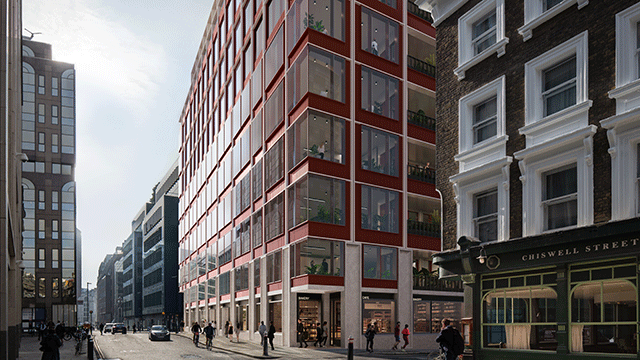EDITOR’S COMMENT If you’re feeling a little blue today, look away now. Things might get a little depressing.
While the sun may finally be shining, the storms are brewing and look set to make the second half of the year a pretty tough ride.
Inflation, now at record levels, isn’t going to slip back downwards any time soon, with the key components of inflation being household and fuel costs. Food and goods prices are only heading in one direction, so too is the cost of petrol and gas, which means inflation is staying high and potentially nudging upwards.
Investors are acutely aware of this and the impact that is having on the real estate market is already being felt.
While figures for London office investment for the first half of the year might be 38% up on the five-year average to almost £8bn, the flurry of activity in the first three months of the year slowed dramatically in the second three months. Totals for Q2 were 19% down on the five-year average at just £2.5bn. And with investor confidence waning and caution rising, don’t expect any rallying in Q3. Nor maybe in Q4.
Confidence from across the pond, or lack thereof, is being felt over here. Brookfield boss Brad Hyler this week warned that investment in real estate is about to plummet and the Fed is widely expected to hike interest rates in the US as it seeks to fight inflation with all its might – even if it is at the expense of economic growth.
Even in the booming life sciences sector we have seen investment into start-ups and scale-ups wane a bit. And although demand massively outweighs supply for life science space here in the UK, the knock-on effects will likely be felt one day soon.
Discussions the EG team has had with North American, global and UK investors all have a hint of the same flavour. All are now bearish rather than bullish. All are acting with caution.
And it is easy to see why. Lloyds this week revealed that it had seen the number of customers with persistent debt problems increase by almost one-third. But it is not just consumers who are feeling the bite. While we might not be seeing the banks openly talk about debt issues in the real estate sector, we have certainly been talking with plenty of players in the market who are dealing with “tricky” assets and non-performing loans teams are in place. Ready. Waiting.
An unhelpful note from Bank of America saying, and I’m paraphrasing here, that all but the very best offices are dead and that all the office-focused REITs will see office values fall by 12% by 2024 and rents flatline, wiped billions off the market capital of the UK’s largest listed propcos. Its analysts are unlikely to be the only ones to stick the knife in.
This is not just a consumer recession, this will be a business recession too.
But as always, where there is stress there is opportunity and if I have learnt anything about this industry over the nearly two decades I’ve been at EG, it is that there are always people in it that can spot an opening.
Calastone figures this week showed the first inflows to property funds in four years. The firm has been reporting on record outflows consistently recently, as investor sentiment waned. But there now must be something the opportunists are seeing. Some £134m of capital flowed into property funds in June, the best month since June 2015. Investors are seeing real estate as a safe place to hide, says Calastone’s head of global markets Edward Glyn, swiftly caveating with a don’t pop that champagne cork just yet, sentiment is fragile.
But better, perhaps, to catch a falling knife than miss the catch entirely.
To send feedback, e-mail samantha.mcclary@eg.co.uk or tweet @samanthamcclary or @EGPropertyNews











